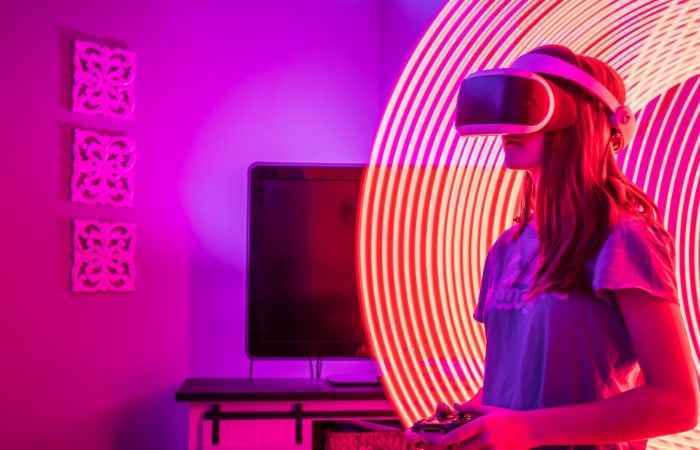Oct 15, 2018
Augmented Reality Application Testing: Is It Really Worth Investing?

The technology field is moving with leaps and bound. Keeping up to date with latest trends and innovations is a necessity if you belong to this domain, that’s why we, at BugRaptors are exploring the world of Augmented Reality and what it means for your business.
What is Augmented Reality (AR)?
Augmented Reality (AR) is basically the merging of virtual content with the real world user’s environment having real-time interaction. It overlays the imaginary content like graphics (2D/3D) their corresponding audio and visual components onto the real world. Thus, this technology augments the capabilities of human senses thru a hand-held device or some wearable gadgets. These applications are unconventional as these always are not operate-able by just mouse and keyboard, so these require usability assessment to verify that whether they accomplish their objectives and reach desired users or not. So, how does augmented reality work?
Types of AR Apps:
- Location-based augmented reality apps
- Marker-based augmented reality apps
What is the Future of Augmented Reality Mobile App Development?
Augmented reality in actual has been around us from a long time without us even knowing. The best and foremost example of this is Military. The military field was the first area which used the Augmented Reality in real time. The military used the AR technology for the pilots. Pilots wear the goggles those were based on AR technology, and these goggles were used to display the radar data to enhance the missile attacks.
Augmented reality has various real-world examples which show how that technology is working with the current projects in different fields like Education, Sports, Gaming, Medical, Defense, etc. There are so many examples depicting the deployment of AR currently in a commercial setting, like theme parks and museums. Fashion and astronomy fields are not far behind to use this modern day technology. In terms of future of AR app development, the game-changing event will likely be when one does not require any screen to interact with the system. Another major field with vast opportunity for growth and implementation of AR is gaming. More and more modern day games are implementing AR/VR technologies to attract more audience. One this is sure, Augmented Reality is here to stay for a long time in the future.
Testing Methodology in Augmented Reality Testing: Augmented Reality-Based Testing
To test AR based applications we use a testing methodology called Augmented Reality-Based Testing (ARBT). ARBT is basically a way that combines software and augmented reality testing to augment the procedure by introducing an additional dimension in the testing field. For example, consider a person testing is wearing an HMD (i.e. Head-Mounted Display) gear or any AR contact lenses will be able to clarify instructions for test operations to a tester who is testing a complex system as the AR gears will superimpose the virtual graphical objects over the user’s real-world view and can detect virtual labels also for the areas needed to be tested.
What are the Challenges in Augmented Reality App Testing?
While testing an AR app conventional methods are not as effective as one expects them to be. Tester has to think customized scenarios based on the requirement and usage of the application under test. Some of the basic scenarios which we came across while testing these applications are listed below:
- If the camera or sensor detects more than one marker in the scene, is it possible to specify one?
- Is the number of virtual objects in the scene appropriate?
- Is the number of interaction options satisfactory? (marker, keyboard, mouse, joystick)
- Is the user guide satisfactory? (video, text, audio)
- Are you satisfied with the interaction solution?
- Are you satisfied with the freedom to move around during interactions? (e.g., you don't need look directly at the camera constantly)
- Is the loading time of virtual objects in the scene satisfactory?
- Are the virtual objects merged correctly with the real world? (position, texture, scale)
- Is the virtual object animation coherent with the real world?
- Is it easy to stand the marker in an appropriate position and orientation to be detected by the camera/sensor?
- If the tracker system detects more than one object in the scene, does the application continue to function correctly?
- Is the user instructed about what to do during the interaction? (e.g., show the marker to the camera or is there a manual)
- Are there specific requirements? (camera, marker, mobile, GPS, user position, lighting, print, calibration)
- Is the tracker system stable?
- If the tracker system detects more than one object in the scene, does the application continue to function correctly?
App success with—and without—AR
AR app development has seen a significant rise in recent times as it has become easier and economical process all thanks to the support from Apple and Google. This means that a lot more forthcoming applications will provide AR features. But, to ensure success, simply adding AR to any application is not enough. We have to understand the user’s requirement and then think about the way of implementing augmentation.
We, at BugRaptors, are well-versed with all the challenges and shortcomings encountered during testing of AR Apps. We perform extensive Augmented Reality-Based Testing (ARBT) so that the developed software is up to the need of the intended user.